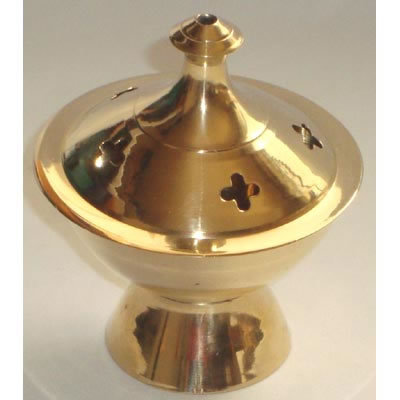
We’re big fans of incense. We love making it, and smelling the fragrance as it burns away on charcoal. But it’s a bit of a dying art these days. So here’s some tips about burning loose incense on charcoal.
All charcoal burners require sand at the bottom. Charcoal is an intense heat and this sudden heat can damage the burner, especially ceramic ones. A level of about a cm at the bottom is required to smooth out the heat transition.
Firstly, find a good place to set the burner while it’s burning incense. (You shouldn’t move the burner once the charcoal inside). Make sure the burner is either on stone or on something which won’t mind the heat.
When lighting the charcoal, use tongs and a constant flame – either a candle, gas stove or a BBQ lighter. Once flame has touched the charcoal DON’T TOUCH THE CHARCOAL.
Lit charcoal looks extremely similar to unlit charcoal so don’t touch it if there’s a possibility it’s caught.
If you hold your hand above the charcoal, you should be able to feel the warmth emitting from it. If you’re in a quiet place, and you listen carefully, you should be able to hear a slight crackling sound – this also means that it’s caught. If you aren’t sure, put it back into the flame.
Once it’s lit, place it on the sand in the burner and then sprinkle a small amount of loose incense, or a cone, onto the charcoal tablet. The scent should release almost instantly. Be careful not to add too much or you could smother the charcoal.
A charcoal tablet burns for about 45 minutes. You may need to add more incense onto the tablet during this 45 minute period.
Want to learn more about charcoal burning?
Pamphlet on different types of charcoal and what they were used for